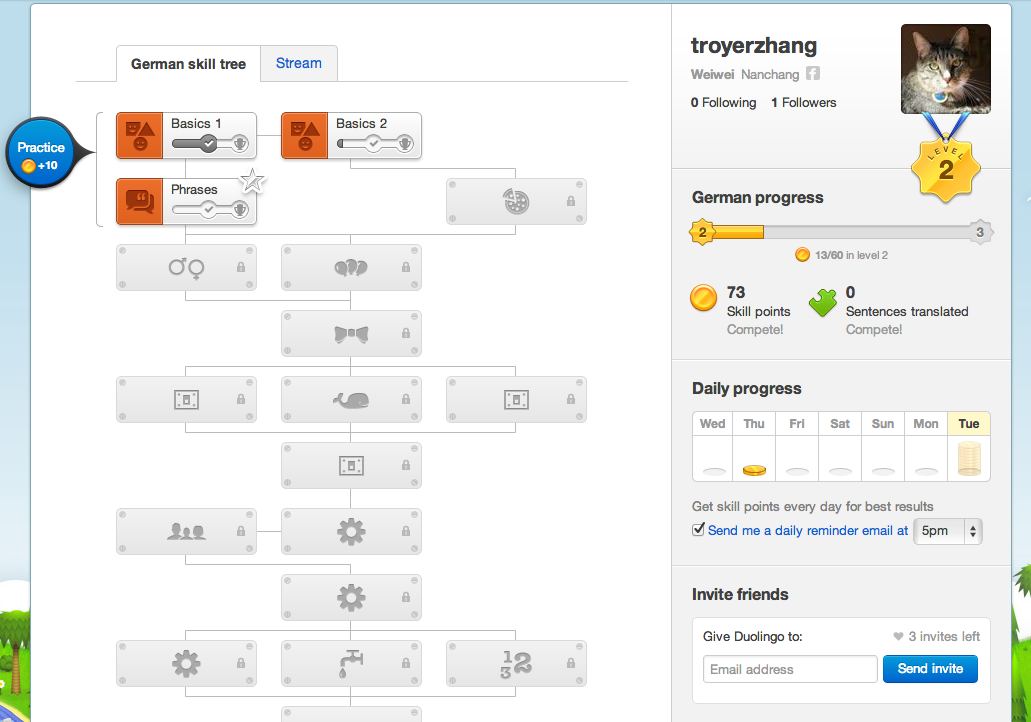I learned about Duolingo at the CALICO conference in May 2012. James Paul Gee mentioned Duolingo briefly in his keynote speech. In the summer, one of our French students mentioned that he had enjoyed studying with Duolingo. Duolingo provides excellent exercises for language learners although students might find learning a little challenging if they start to learn a foreign language only through Duolingo. Duolingo may be an excellent choice for students who are taking language classes and who are looking for supplemental materials to study.
Duolingo has a unique structure — it is not only a language learning tool, it also encourages people all over the world work collaboratively to translate online material. Here is how it works.
In each available language (German, French, Spanish), there is a skill tree available (see image below). Students cannot skip levels in their progression. For example, I just started learning German and I’m currently at the very basic level, level two. I can either continue learning by clicking on level two or I can click on level one to review what I have learned. From the screen shot below, you can see I reviewed level one and I received some points by doing that because I’m enhancing the language skills I learned in level one.

Now let’s go to level one and see what the lessons and exercises look like.
When you enter a level, there will be two “packages” available for you. The one on the left contains all the lessons in this level, and the one on the right contains translation work for you to do (you don’t have to do it) and all the words, phrases, and sentences are taken from online material in your target language (German, French, or Spanish). Below the two “packages,” you will find some tips and notes for you to study. Usually the tips and notes are associated with the lessons and exercises in this level.

There are a few different types of exercises for students to do, and students might come across more types of exercises as they reach higher levels. Students will be given words, phrases and sentences in both written and spoken forms, along with some exercises to practice what they just learned. It is very likely that students have already learned the material in class, so Duolingo may provide a good way to reinforce that content on their own. Another benefit of Duolingo is that students will likely be introduced to new vocabulary. You can see more in the screenshots below.



In each lesson, you have four “hearts” for you to lose (see red heart shapes in the screen shots above) . When you made a mistake, you lose a heart; you can’t pass a class if you make too many mistakes. Duolingo will make you go through the class again before you can reach the next level.
Another great thing I want to point out about Duolingo is it provides you a vocabulary list that reflects your own learning. See below for my progress on learning German:

You can see I’m good at some words, but not so good at the others. Sometimes this is the result of a spelling error, and other times I didn’t remember the word, so I couldn’t complete the dictation. This custom vocabulary list allows you to see when you learned the word and how you improve over time. This list may also help you decide which level you should go back and revisit.
Have fun with Duolingo!
